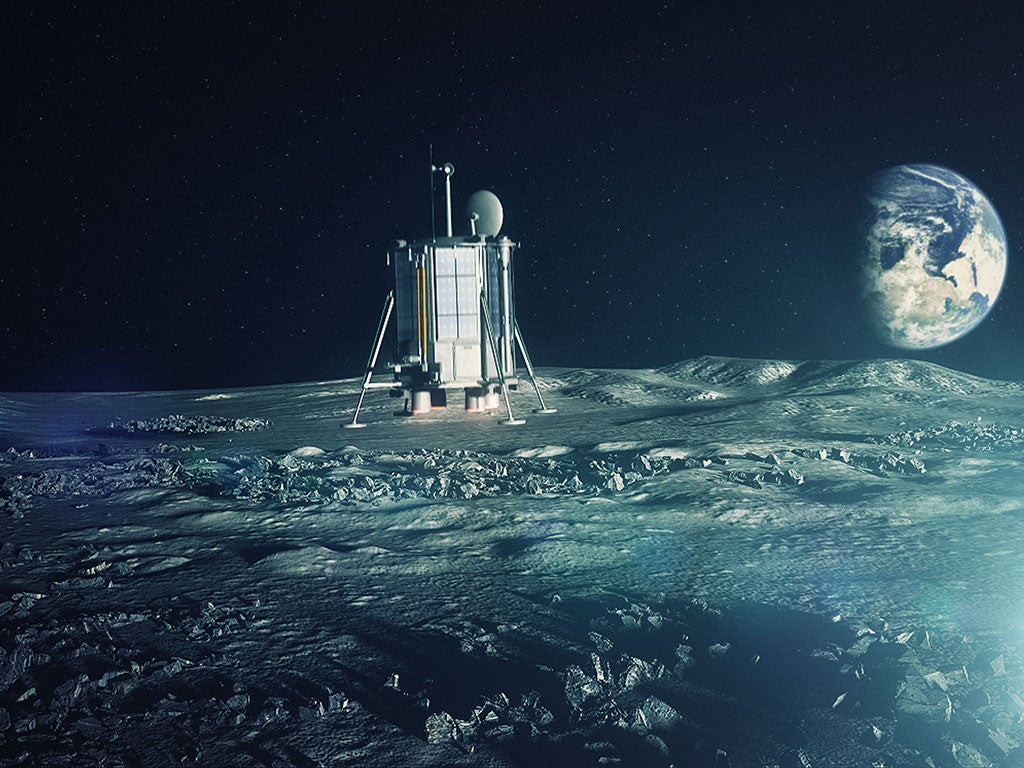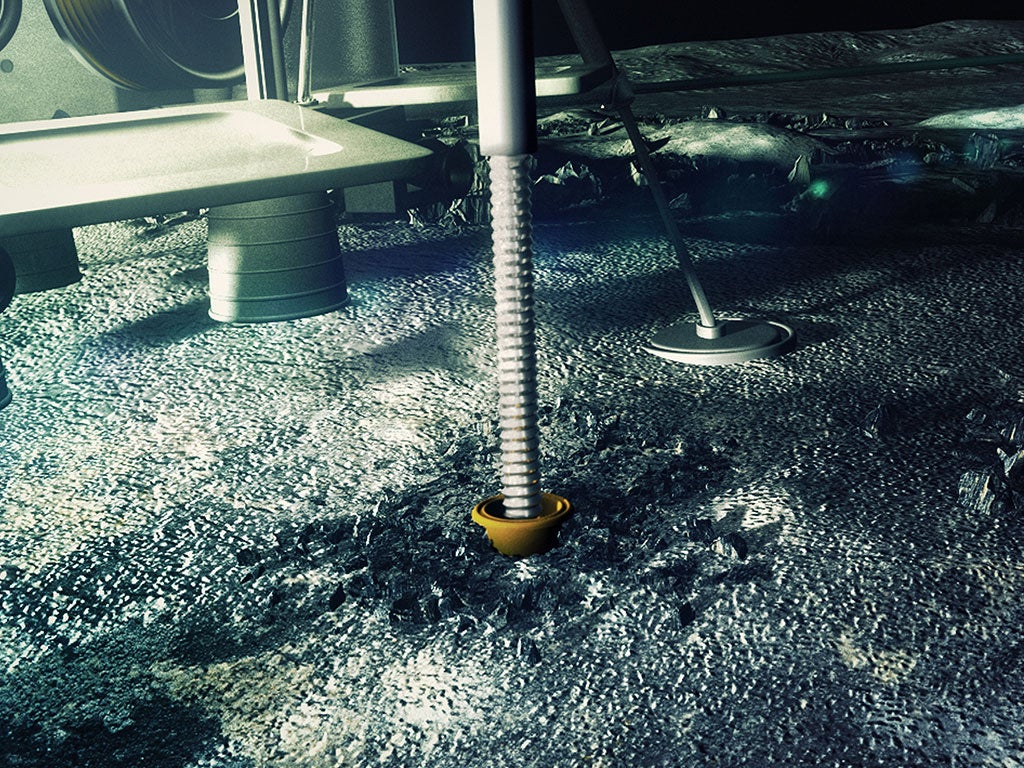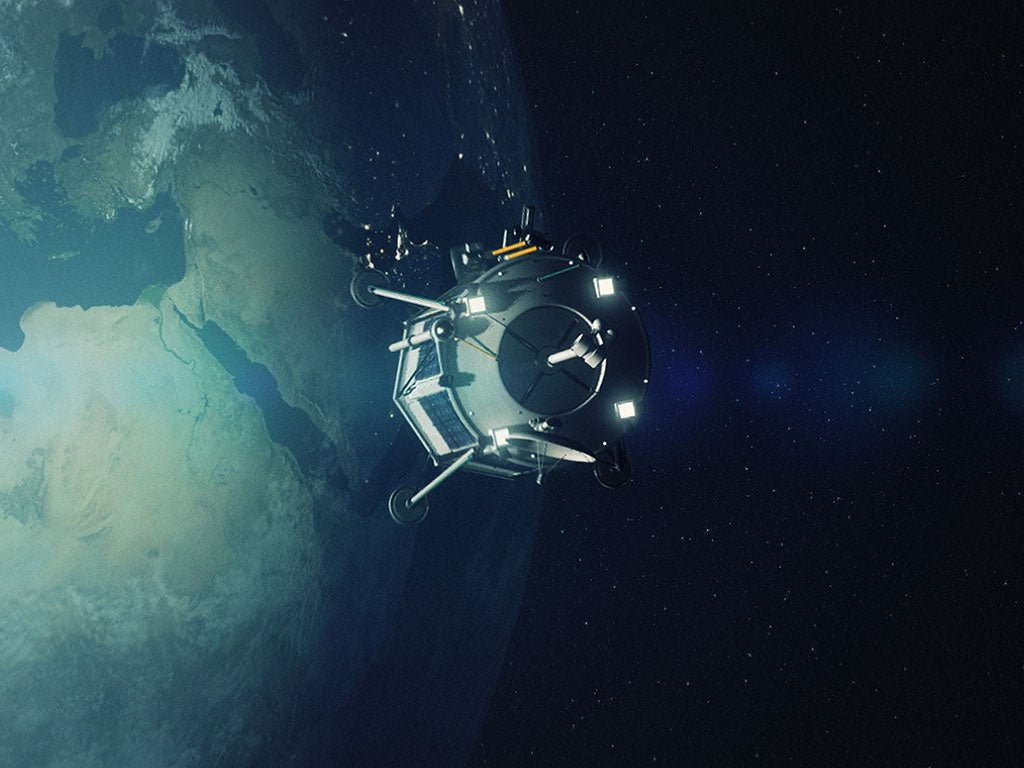Lunar Mission One to crowdfund moon drilling project by offering space time capsules on Kickstarter
Crowdfunded space mission will drill into moon and leave time capsules filled by backers

Your support helps us to tell the story
From reproductive rights to climate change to Big Tech, The Independent is on the ground when the story is developing. Whether it's investigating the financials of Elon Musk's pro-Trump PAC or producing our latest documentary, 'The A Word', which shines a light on the American women fighting for reproductive rights, we know how important it is to parse out the facts from the messaging.
At such a critical moment in US history, we need reporters on the ground. Your donation allows us to keep sending journalists to speak to both sides of the story.
The Independent is trusted by Americans across the entire political spectrum. And unlike many other quality news outlets, we choose not to lock Americans out of our reporting and analysis with paywalls. We believe quality journalism should be available to everyone, paid for by those who can afford it.
Your support makes all the difference.A British company is crowdfunding its space mission on Kickstarter, raising money to go to the moon, drill deeper into it than ever before, and explore the possibility of building a permanent base there.
The project, Lunar Mission One, hopes to raise £600,000 for the development phase — as of Wednesday morning it had raised £32,000 through over 300 backers, which was quickly growing — and then fund itself through other means over the next 10 years of the mission.
Backers will get the chance to leave information in “digital memory boxes”, which the project claims will be preserved for about a million years by the conditions on the moon. Backers who pledge more will be allocated more space on the digital archive, though the precise size of the space has not yet been decided.
Backers will also be given physical space to “deposit a strand of your hair”.
As well as the memory boxes, the project will put together an “authoritative record of life on Earth”, which will also be placed in the time capsule. It will include a record of human history and civilisation, and a species database, that scientists hope will continue to be a record of life on Earth even if the planet is destroyed.

“Governments are finding it increasingly difficult to fund space exploration that is solely for the advancement of human knowledge and understanding as opposed to commercial return,” said David Iron, who founded the project. “The world class team of advisors and supporters we have assembled will address this issue and crucially, anyone from around the world can get involved for as little as a few pounds.”
The project has found a range of celebrity backers, including Brian Cox, who has said that the moon is a stepping stone to exploring the rest of space.
Kickstarter rewards range from access to an online community that will provide updates on the project, for pledges of £3, to a place in the viewing gallery at mission control to watch the space landing, for £5000. Other rewards include meet the experts events and the opportunity to have backers’ names written on the ship. All pledges over £60 will be given digital memory boxes.
“The Rosetta mission has opened the way for a new era of pioneering space exploration and demonstrates the public appetite to engage with the secrets of the solar system,” the project said on Kickstarter. “We want this to be a truly international mission that everyone everywhere can get involved in, so we are using Kickstarter to finance the next phase of development.”
The Kickstarter will fund the mission’s development phase. After that, the mission will be funded by the sale of digital memory boxes as well as through public sector and commercial backing.
The project hopes that it will be able to land the ship on the moon within ten years. It will land on the moon’s south pole, where there is constant light, and will investigate the lunar rock and explore the possibility of a permanent manned moon base there.

Scientists say that the drill will go down at least 20 metres — 10 times deeper than anyone has drilled on the moon before — but could go as far as 100 metres. It will examine the rock there, which is around 4.5 billion years old. While much of the surface of the moon is made up of more recent deposits, the deeper rock of the moon is thought to be much older and has not been studied.
The developments in drilling technology that will be provided by the project could be replicated on Earth, the project said, helping to improve the safety of remote drilling.
The memory boxes will be placed at the bottom of that hole, after the drilling is complete.
“The project is plainly ambitious and challenging, but its special cultural and scientific features should generate wide interest and support,” said Lord Martin Rees, astronomer royal and fellow of Trinity College, Cambridge. “It deserves to succeed.”
Join our commenting forum
Join thought-provoking conversations, follow other Independent readers and see their replies
Comments